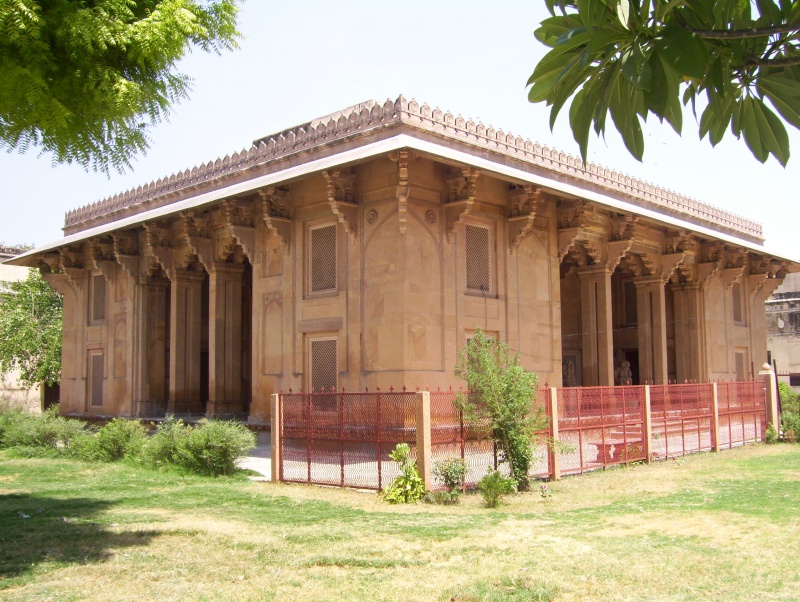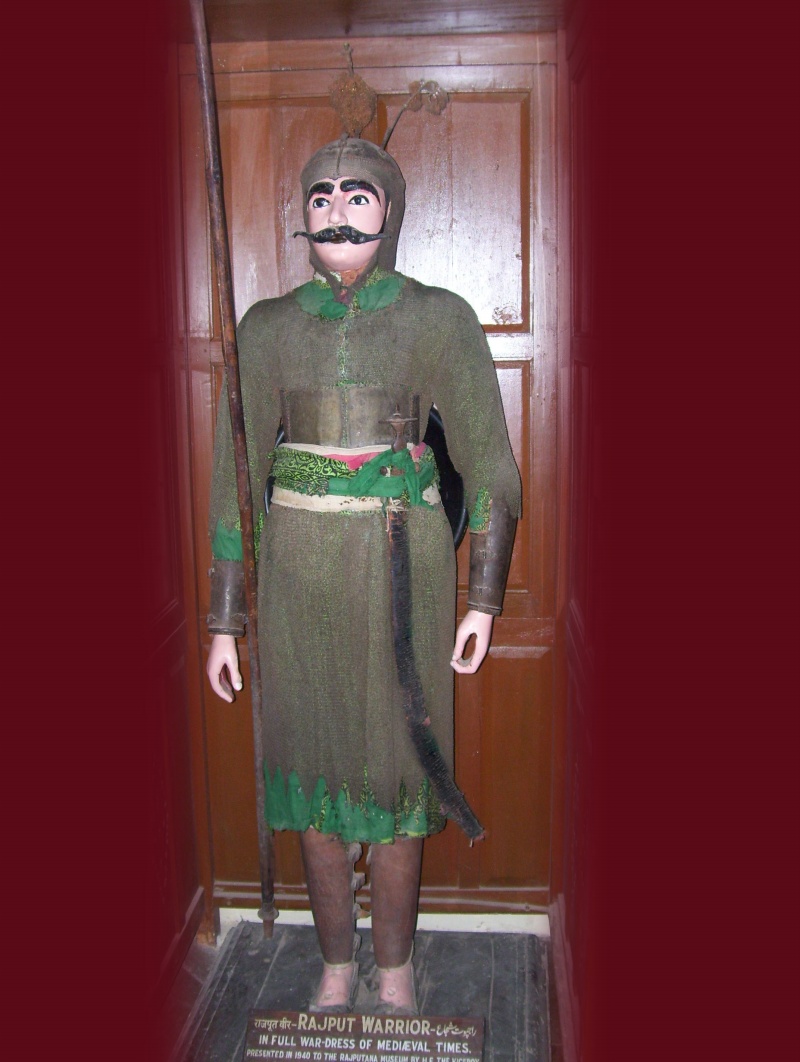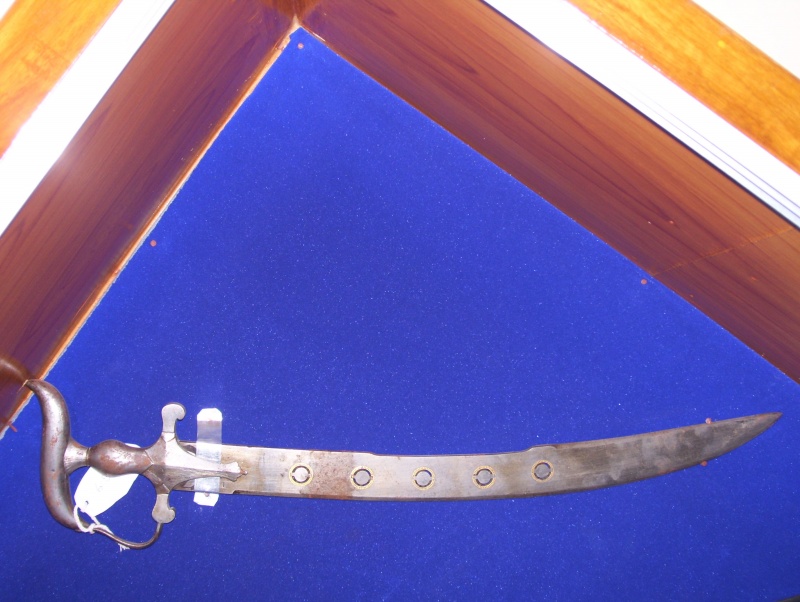|
|
 |
|
Ajmer
Museum |
|
Introduction of Ajmer Museum |
|
The
Government Museum,Ajmer is located inside the Akbar’s fort in Ajmer,
also named as Magazine. It was founded in Oct. 1908 under the support
of Lord Curzon and Sir John Marshall, and then Director General of
Archaeology in India. After that it was developed by its first
Superintendent, Pandit Gaurishankar Heerachand Ojha. The aim of which
is to focus the cultural heritage of the region through its exhibits.
The museum primarily consists of Sculptures, inscriptions,
pre-historic section, miniature paintings, arms and armor and objects
of art and crafts.
This
Museum is located in the Dil-e-Aaram Gardens of Ajmer in
Rajasthan. The museum is divided into three sections. Two 'Yupa
Pillars' (sacrificial posts) of the museum are decorated with
inscriptions from the Barnala and Prathihara scriptures belonging to
the 8th century and terracotta from early historical periods. The
museum has various dug up material from Rairh, Bairat, Sambhar, Nagar
and other destinations.
The museum contains two “Yupa Pillars” (sacrificial posts) with
inscriptions from Barnala. Ajmer Archaelogical museum also has
Prathihara sculptures of the 8th century and terracotta belonging to
early historical period.
Earlier in time, the dug up material from Rairh, Bairat,
Sambhar, Nagar etc. and the sculptures and inscriptions has been
gathered from various sites in the former Jaipur State were housed at
Vidyadhar Gardens in Purana Chat. In July 1949 the entire collection
was transferred to Dil-e-Aaram Garden, a part of the old palace at
Amer.This
Museum comprises a large number of scriptures and some excavated
material dating back to earlier civilizations Also
an art gallery was introduced in this complex in 1992. This museum is
basically divided into three departments.
|
|
Sculptures |
|
Sculptures constitute the most interesting section in the museum. This
museum has some of the ancient, rare and unique piece which have been
taken from Pushkar, Adhai-din-ka-jhonpra, Baghera, Pisangan, Harsnath
(Sikar) Bharatpur, Sirohi, Arthuna and Osian.
These
Sculptures range in date from Gupta period down to the 19th century
A.D, signifies Jain faiths, Shiv and Vaishnava respectively. Among
these patterns of art some of the fabulous master pieces like Shiv and
Parvati (No. 13), Charturmukh Shivlinga’s (No. 15 & 16), Vishnu
(No.50), Indra (No.55), Laxmi Narain (No.352), Kuber(No.54, 349, 356),
marriage of Brahma-Vishnu-Mahesh (No.206), Lingodbhav Maheswar (No.
374), Surya (No.370), Nakshatras (No.451), Ganesh (No. 1054), Vahah
(No.448), etc.
A
separate gallery of the museum also exhibits a wonderful collection of
Jain figures which are very interesting. Most of the Jain statues of
this Museum comes from Rajasthan as Rajasthan is a prominent hub of
Jain culture. Some of the important collection of Jain sculptures in
the museum comprise the statues of Kunthunath (No 1143), Yaksha
Gaumukh (No 370), Shantinath (No 344-345), Mahaveer (No 279),
Rishabnath (No 44), Parsvanath (No 56 & 17). The museum also exhibits
statues of Saraswati (No 57-58), which is a very prominent attraction
of the museum and is worth to visit this statue.
Most of
the collection of the sculptures of the museum belongs to the period
of Chauhan rulers of Ajmer like, Someswar, Prathviraj IIIrd, Simhraj,
Vigrahraj IInd, Vigrahraj IIIrd, Vigrahraj IVth, and Ajaydeo, it was
the period from 10th century A.D. to 12th
century A.D. During this era, growth is observed in every area of
life. Important cultural hub in Rajasthan during this era was
Ranthambhor, Sarwar, Naraina, Bisalpur, Baghera, Ajmer, Nadol. During
this period architectural patterns of art and various activities of
art were at the peak. The materials which were used during this era
are white marble schist, granite, light sand stone, basalt, and in
11-12th century images (from Bhaghera) a fine grieved black soft stone
which makes possible clear cut and excellent features of the figures
and also high polished minute carving.
|
|
Inscriptions |
|
In addition
to the section of sculptures there is a distinctive and amazing
collection of inscriptions in the museum which are mainly collected
from different parts of Rajasthan and which draws attention of
researcher’s.
Some of the important inscriptions in the museum include the
following:
1) Inscriptions of Pushkar which contains the name of king
Vakapatiraj. These inscriptions dates back to 10th century A.D.
2) Inscription of the time Great Prathviraj IIIrd V.S. 1234 (witness
the structure of a vapi). In this collection of inscription a number
of important copper plates were also added.
3) Inscription of the time of Chamundraj V.S 1137.
4) Slab inscribed with Harkeli Natak 1153 A.D (Composed by Chauhan
King Vigrahraj IVth).
5) Jodhpur inscription of Bauka dated V.S. 894 (it says the Pratihar's
of Mandor are the descendants of the Brahamin Harishchandra and
records the dates and names of his descendants up to Bauka).
6) Lalit Vigrahraj Natak Inscription during the period of Chauhan
ruler Vigraraj IVth which is of 1153 A.D and is composed by court poet
Somdeo.
7) Rahomi inscription of Berli (Ajmer) which belongs to 2nd century
B.C. It is also one of the earliest epigraph which was discovered in
Rajasthan.
8) Baghri inscription of Vikram Samvat 481.
|
|
Arms and Armour |
|
In the
section arms and armaments a wide collection of weapons are displayed
which are of battles of medieval period. These exhibits include
kataar, swords, guns, dhal’s, dragger’s, jagnol and farsa.
The weapons
are of different varities and types which include different type of
hilts and the amazing work on hilts. Some of the prominent weapons of
the museum are kept under a pillow inside the museum which are only
used in emergency, which includes various type of guns such as
Topidar, Patharidar, Eknali, Ramchangi, Donali, Kartusi, Toderdar etc.
In this section other remarkable instruments include a helmet which is
adorned with spik, nose guard of a Rajput fighter and also a gun
having a historical significance is also exhibited inside the museum.
|
|
Excavated material |
|
These
include historical objects and cast of seals with picture which were
discovered by Mohanjodro. Most prominent among these materials
include: images of Mother goddess, Bangles of clay, animal and human
figures, bangles of copper, various type of bricks, wheel of toy cart,
pieces of conch, small portion of carbonized wheat, knives or blade,
copper arrow head, stone for sharping tools, blade of an axe, Venus,
needle, etc are 3000 year’s early to Christian era.
|
|
Art and Crafts |
|
In the
ancient times, the artists of this area did carving on ivory and wood
also, as some examples of their craftsmanship are antimony boxes
having applique and ivory work, goblets and vases, work on ivory comb,
necklace, knife and brass which are fully decorated and carved. Other
exhibits of this section include: marble plates, stone grinder, wooden
dharau and pen holder and also some specimens of blue pottery.
|
|
Reserve collection |
|
A variety
of objects are displayed inside the Reserve section of the Museum.
Research scholars are allowed to visit this section and do photography
and research only with prior permission of the Director, Archaeology
and Museums, Rajasthan, Jaipur.
|
|
Reference Library |
|
This
museum has a rich collection of reference books on history, and
archaeology, Library of the museum has a collection of various books
which are related to art, archaeology and history. Research scholars
are allowed to go inside the museum.
|
|
Organizational Set-up |
|
The
museum of Ajmer is a Government institution and is under the
Directorate of Archaeology and Museums Department, Govt. of Rajasthan
Jaipur. It is under the administrative control of the Superintendent
Archeology and Museums, Jaipur Circle, Hawa Mahal, Jaipur, Rajasthan.
The staff of the museum consists of the Curator (Officer In-charge)
Office Assists. Beside Gallery attendants and watch and ward staff.
|
|
Protected
Monument Akbar’s Fort |
|
Akbar’s
Fort was founded in 1570 A.D by Akbar who was a Mughal Emperor. It is
a large square building with superior octagonal bastions at each
corner. There is a very wonderful chamber of audience and a glorious
gateway facing the town towards west, this fort was used as the
dwelling of the emperor’s during their visit to Ajmer. Presently this
fort is under the control of the State Government.
|
 |
 |
|
Rajput
Warrior |
Structure in the Museum |
|
 |
 |
|
Weaponry of the Museum |
Weapons Section |
|
|
|
|